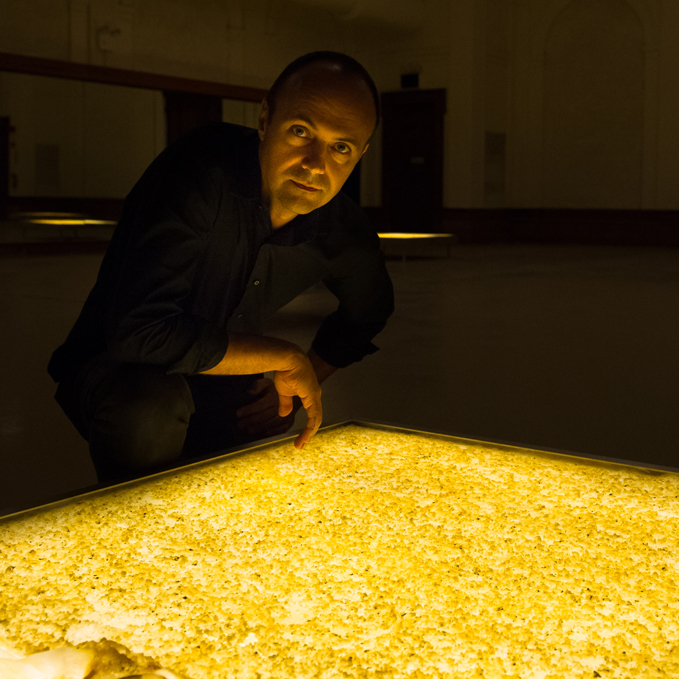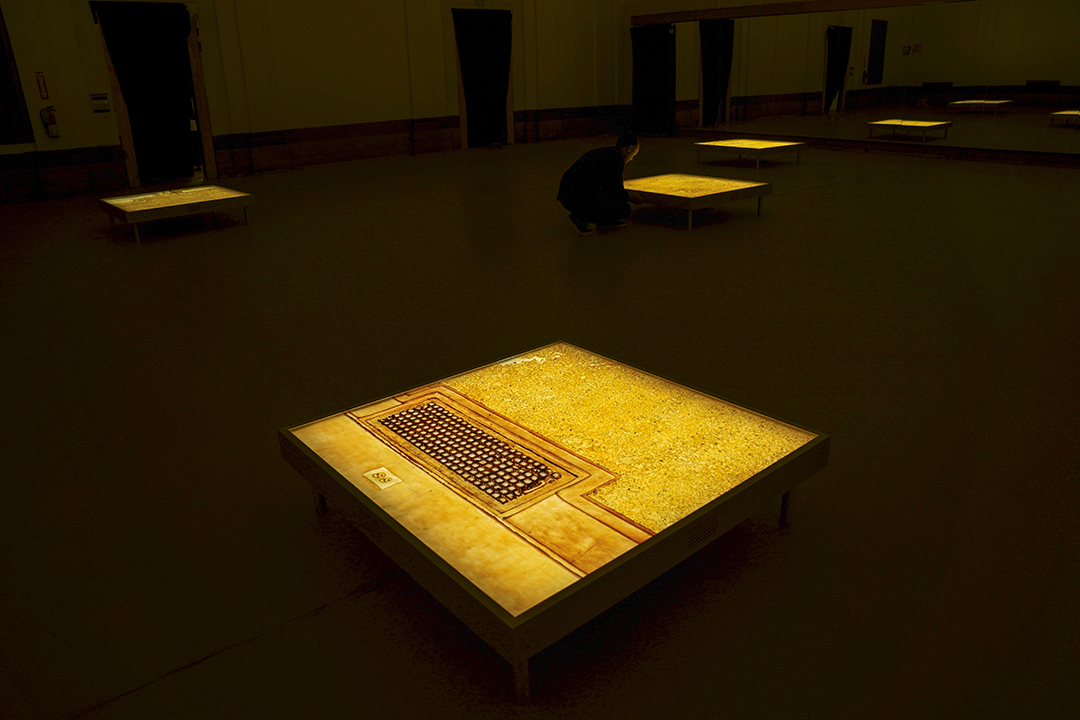The international artist attributes his diverse career to MIT’s open culture.
Jorge Otero-Pailos ’02 attributes his unique artistic vision to his experience at MIT, where he earned a PhD in History and Theory of Architecture at the MIT School of Architecture and Planning. He describes himself as a “connector rather than a divider,” whose work explores new and surprising ways to think about memory, culture, and change.
Known internationally as an artist, author and preservationist, Otero-Pailos is also a theorist, public intellectual, and educator; he is director and professor of Historic Preservation at the Columbia University Graduate School of Architecture, Planning, and Preservation. The Spanish-born Otero-Pailos credits the welcoming environment and multidisciplinary connections he made at MIT with developing his eclectic artistic vision, a journey that began as a child in Madrid.
Painting with Father in the Prado
Otero-Pailos’ parents, both engineers, were uncommonly nurturing of their son. Jorge and his father would set up easels at the Prado Museum, copying paintings by Goya, who was a favorite (Velazquez less so.) Trips to the Parthenon in Greece and Teotihuacan in Mexico cultivated a lifelong interest in architecture and its connection to art.
Years later at MIT, Otero-Pailos’ was drawn to the work of Krzysztof Wodiczko, a Polish artist known for large-scale slide and video projections on architectural facades and monuments. At the time, Wodiczko was working on the Bunker Hill Monument Projection in historic Charlestown, Massachusetts.
The installation, says Otero-Pailos, prompted a lasting realization: “Art can make monuments speak in a contemporary language.” Today, the artist is internationally known for his monumental casts of historically-charged buildings, and for his work in advancing the field of experimental preservation.
New Influences and New Discoveries
Wodiczko was only one of many influential minds that Otero-Pailos encountered at MIT. Two professors in particular contributed to his intellectual and artistic growth: Mark Jarzombek, Professor of the History and Theory of Architecture, who oversaw his doctoral dissertation, and Leila W. Kinney, the Executive Director of Arts Initiatives and the Center for Art, Science & Technology, who introduced Otero-Pailos to German-born American sculptor Eva Hesse; her pioneering work became a major influence.
Proximity to the Harold Edgerton Center was especially fruitful. In 2014, Otero-Pailos re-enacted Harold Edgerton’s iconic 1964 photograph, Bullet through Apple, revealing for the first time that Edgerton had flipped his negative. The skill of close observation he learned as a child at the Prado stood him in good stead.
He remains grateful to MIT for encouraging him “to avoid academic and intellectual specialization, to trust my instincts and intuition, and to keep a wide-open approach to the world.”
A Career Defined by New Exploration
Otero-Pailos’ latest work, Repetiteur, is on view at the Harkness Studio at New York’s City Center this spring. Using his latex casting technique, the artist creates six light boxes that echo the sounds of rehearsals made over the years by legendary choreographer Merce Cunningham, whose centennial is being honored in 2019. The haunting work evokes the ephemeral nature of dance and the essential role of the repetiteur (a person entrusted with teaching, coaching, and rehearsing.)

Also this spring, Pailos-Otero returns to Thyssen-Bornemisza Art Contemporary (TBA21), an academy that brings together artists and thinkers to seek creative solutions to today’s most pressing ecological, social, and economic issues. Otero-Pailos will contribute his perspective to the launch of Ocean Space, a new center on the oceans and collaborative platform for change. He looks forward “to stretching my mind and expanding my work in preservation to include the huge topic of the unregulated water around the planet.”
The artist sees these divergent projects as an outgrowth of his rich experience at the Institute. He remains indebted to MIT, “for nurturing private obsessions and connecting them to the larger world, where they can make a real impact.”
Currently on view:
Nature’s Afterlives at Sapar Contemporary, New York
November 13th, 2019 through December 20th, 2019
Written by Betsy Groban

